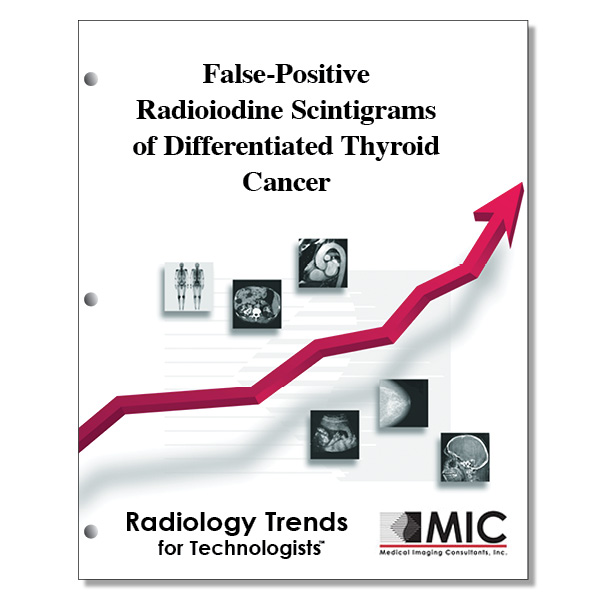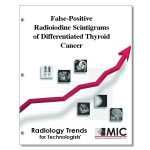

False-Positive Radioiodine Scintigrams of Differentiated Thyroid Cancer
A description of the physiology and biodistribution of radioiodine along with examples of radioiodine scintigrams to aid in proper differentiation of a false positive finding from a true metastasis in patients with differentiated thyroid cancer.
Course ID: Q00525 Category: Radiology Trends for Technologists Modalities: CT, Nuclear Medicine, Radiation Therapy2.5 |
Satisfaction Guarantee |
$29.00
- Targeted CE
- Outline
- Objectives
Targeted CE per ARRT’s Discipline, Category, and Subcategory classification for enrollments starting after January 30, 2024:
Nuclear Medicine Technology: 2.50
Procedures: 2.50
Endocrine and Oncology Procedures: 2.50
Outline
- Introduction
- Radioiodine Physiology and Biodistribution
- Radioiodine Imaging Protocol
- Functional Radioiodine Uptake Caused by Sodium-Iodide Symporter Expression
- Radioiodine Retention
- Radioiodine Uptake in Nonthyroid Neoplasms
- Radioiodine Uptake from Inflammatory or Infectious Causes
- Radioiodine Contamination
- Unknown Causes with Clinical Follow-up and Hypothesis
- Conclusion
Objectives
Upon completion of this course, students will:
- describe radioiodine concentration in remnant thyroid tissue and differentiated thyroid cancer cells
- list what must be known before entertaining 131I therapy
- understand thyroid cancer histopathologic results
- describe how SPECT/CT can reduce the incidence of false positive findings
- identify the mechanisms of radioiodine uptake that lead to false positive findings
- explain why thyroid hormone is important
- understand the various routes of ingested radioiodine excretion
- describe the biochemical processes of iodine uptake
- explain how coupling of iodotyrosines produces T3 and T4
- describe the physical properties of 131I
- describe the physical properties of 123I
- explain the different methods of TSH elevation
- identify required information for 131I dose selection
- be familiar with the process of thyroid embryogenesis
- know the various nonthyroid structures that use the sodium-iodide symporter for concentrating radioiodine
- recognize what technical imaging considerations could be employed to reduce false positive interpretation in a lactating patient
- describe how salivary glands concentrate radioiodine
- explain the image pattern associated with thymus gland uptake of radioiodine and what patient population this affects
- describe additional imaging techniques that can reduce the false positive interpretation of thymic radioiodine uptake
- describe an imaging artifact associated with swallowed saliva and refluxed gastric secretions
- list the various gastrointestinal anomalies that can cause false positive findings
- understand the physiologic excretion of radioiodine from the colon
- know what can lead to blood pool stasis and how it can create false positive uptake on radioiodine scintigraphy
- describe how false positive findings can result from urinary retention within the renal collecting system
- describe how distal bowel activity could be identified as metastatic disease
- explain how dental restoration materials can be problematic on radioiodine imaging
- describe the proposed mechanisms of radioiodine uptake associated with nonthyroid neoplasms
- describe how a Warthin tumor concentrates radioiodine
- know the mechanisms associated with radioiodine uptake in inflammatory conditions
- know how to differentiate pulmonary metastases from pulmonary inflammation
- understand how perspiration can lead to false positive findings
- describe what can be done when contamination on radioiodine imaging is suspected
- recognize how bilateral lower extremity radioiodine uptake could be mistaken for metastatic disease
- know how to reduce false positive findings when radioiodine uptake is visualized in areas not associated with any proposed mechanism of uptake
- understand the variety of confounding false positive findings and what can be done to reduce image misinterpretation
